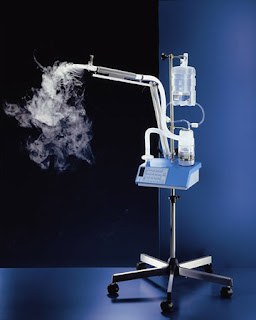General Pharmacology
CV Pharmacology: Angiotensin Converting Enzyme (ACE) Inhibitors: "ACE inhibitors produce vasodilation by inhibiting the formation of angiotensin II. This vasoconstrictor is formed by the proteolytic action of renin (released by the kidneys) acting on circulating angiotensinogen to form angiotensin I. Angiotensin I is then converted to angiotensin II by angiotensin converting enzyme.
ACE also breaks down bradykinin (a vasodilator substance). Therefore, ACE inhibitors, by blocking the breakdown of bradykinin, increase bradykinin levels, which can contribute to the vasodilator action of ACE inhibitors. The increase in bradykinin is also believed to be responsible for a troublesome side effect of ACE inhibitors, namely, a dry cough.
Angiotensin II constricts arteries and veins by binding to AT1 receptors located on the smooth muscle, which are coupled to a Gq-protein and the the IP3 signal transduction pathway. Angiotensin II also facilitates the release of norepinephrine from sympathetic adrenergic nerves and inhibits norepinephrine reuptake by these nerves. This effect of angiotensin II augments sympathetic activity on the heart and blood vessels.
ACE inhibitors have the following actions:
- Dilate arteries and veins by blocking angiotensin II formation and inhibiting bradykinin metabolism. This vasodilation reduces arterial pressure, preload and afterload on the heart.
- Down regulate sympathetic adrenergic activity by blocking the facilitating effects of angiotensin II on sympathetic nerve release and reuptake of norepinephrine.
- Promote renal excretion of sodium and water (natriuretic and diuretic effects) by blocking the effects of angiotensin II in the kidney and by blocking angiotensin II stimulation of aldosterone secretion. This reduces blood volume, venous pressure and arterial pressure.
- Inhibit cardiac and vascular remodeling associated with chronic hypertension, heart failure, and myocardial infarction.
Cardiorenal Effects of ACE Inhibitors
- Vasodilation (arterial & venous)
- reduce arterial & venous pressure
- reduce ventricular afterload & preload - Decrease blood volume
- natriuretic
- diuretic - Depress sympathetic activity
- Inihibit cardiac and vascular hypertrophy
- Sent using Google Toolbar"







